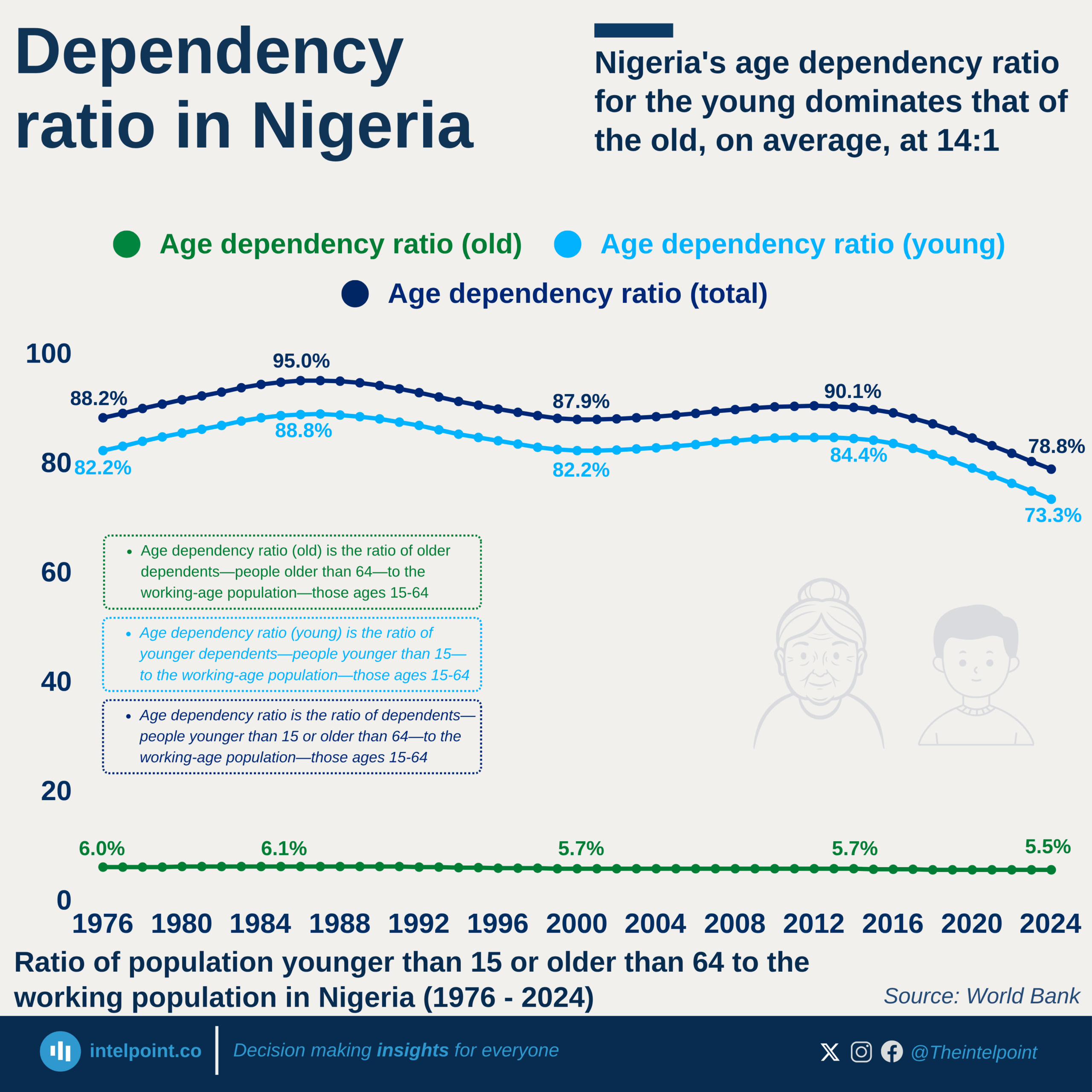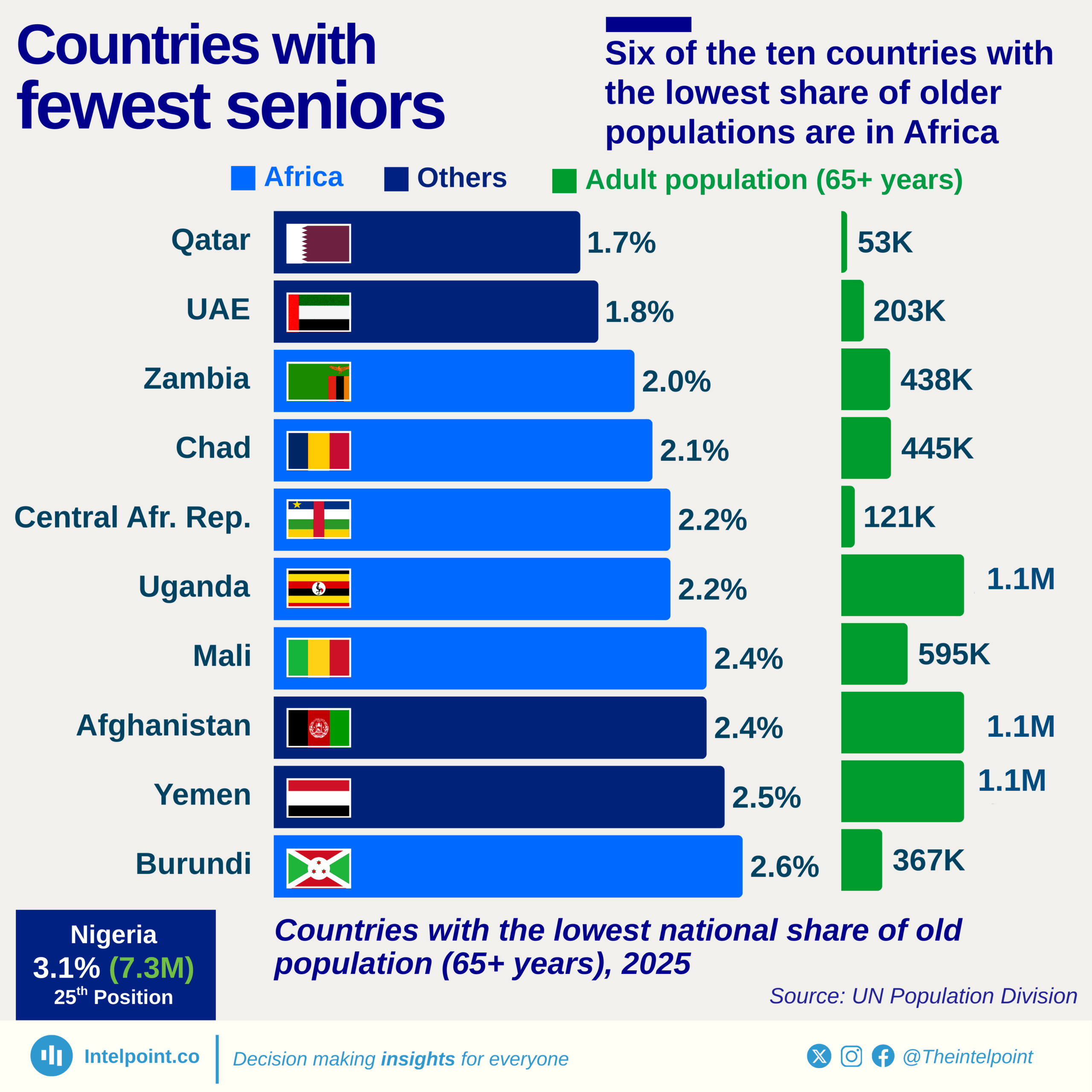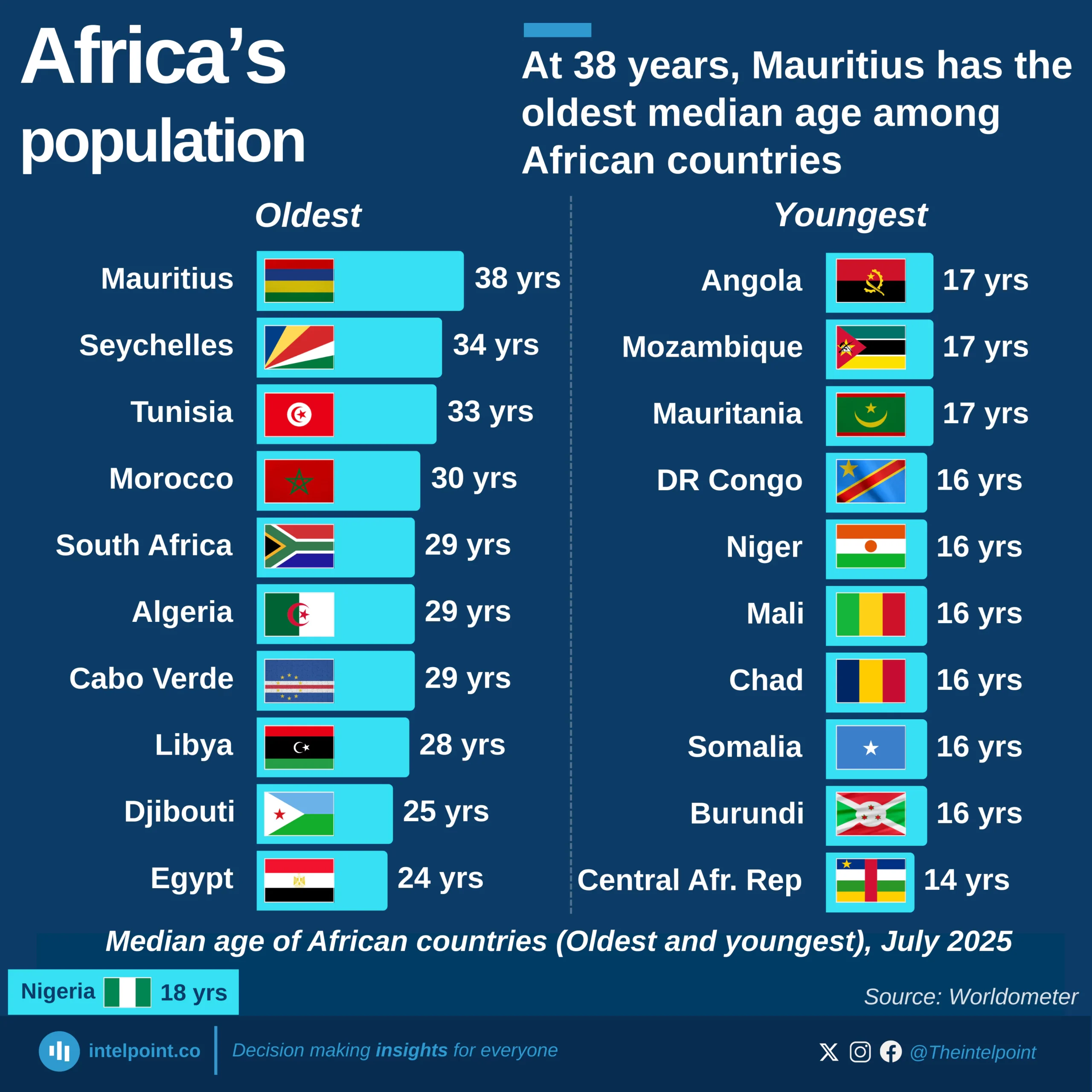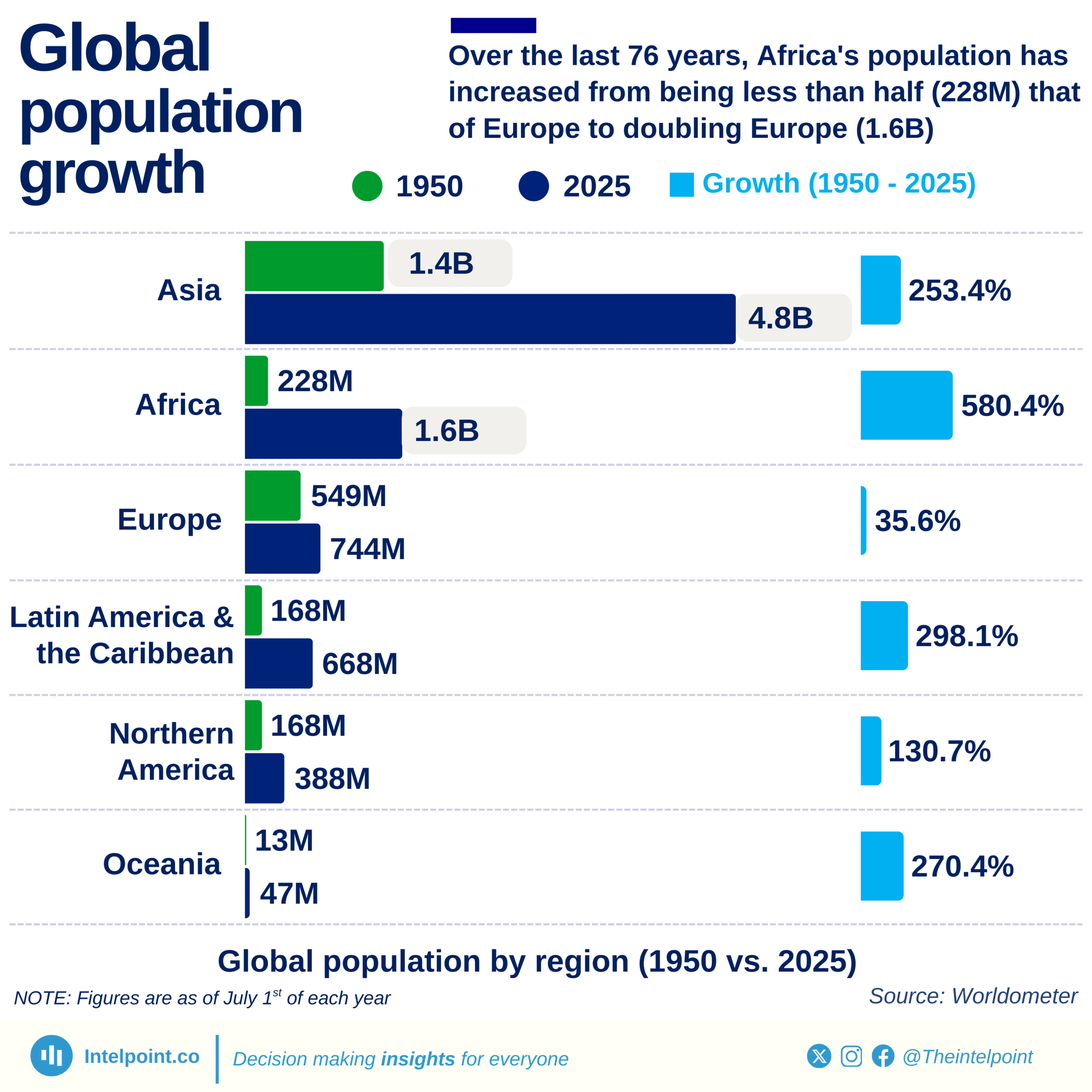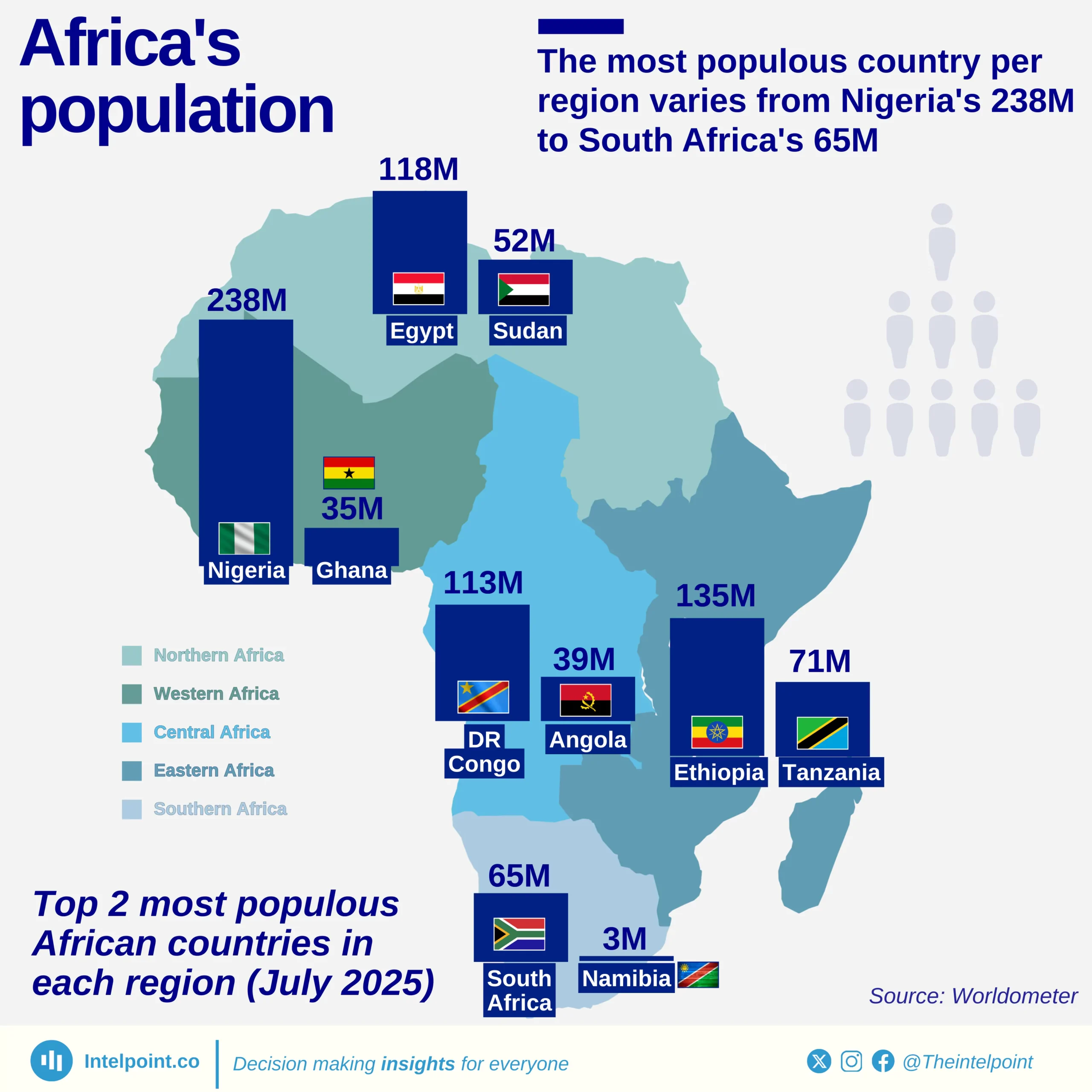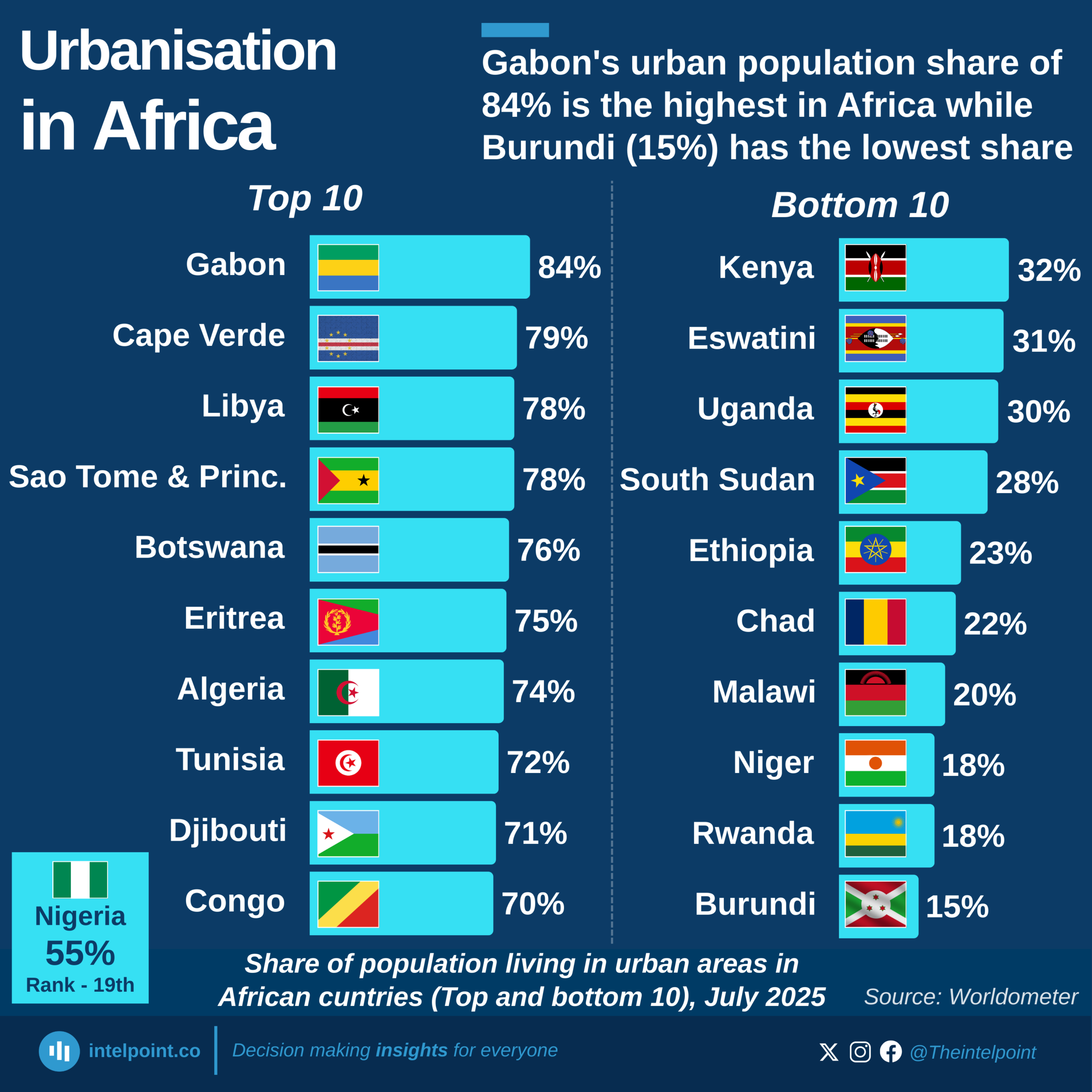Africa’s population is estimated to be 1.5 billion by January 2025, with significant regional variations in distribution. Eastern Africa stands out as the most populous region, home to over 507 million people, accounting for 33.09% of the continent’s total population. Western Africa follows with 461.4 million people, making up 30.11% of Africa’s population. These two regions alone house over 63% of the continent’s inhabitants.
On the other hand, Southern Africa contributes just 4.8% (73.6 million people) to Africa’s total population, making it the least populous region.
